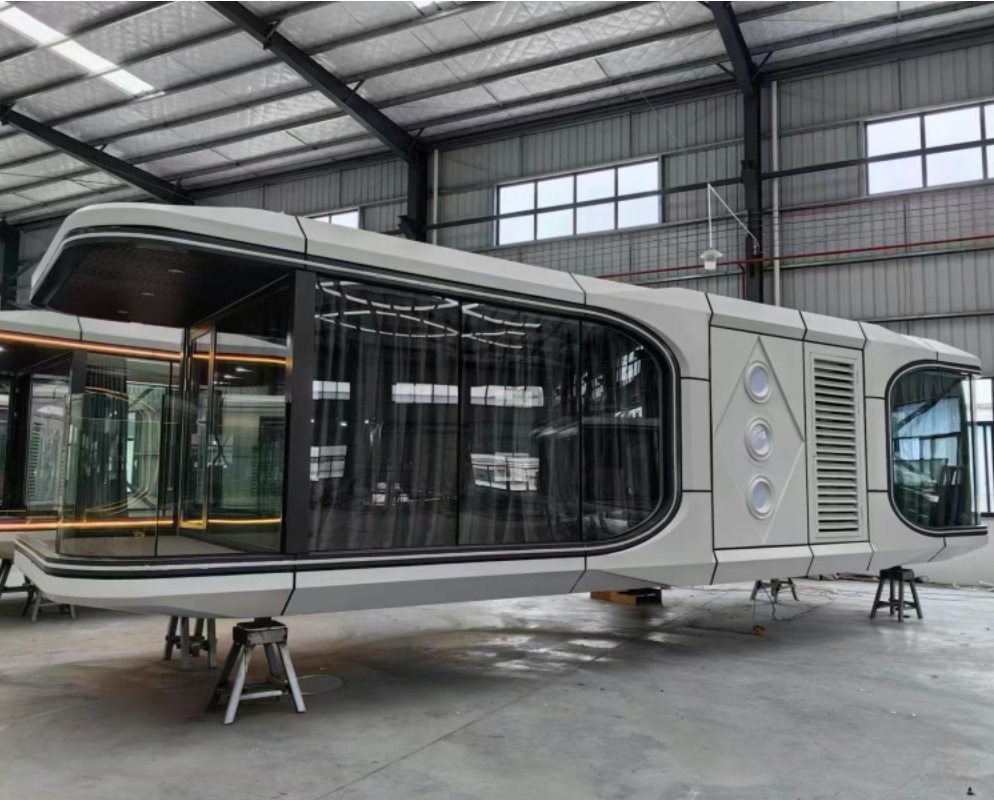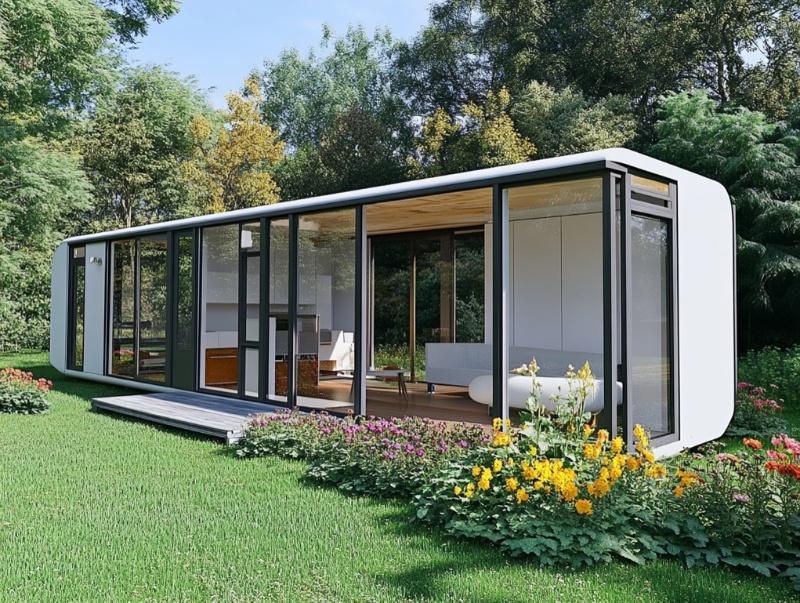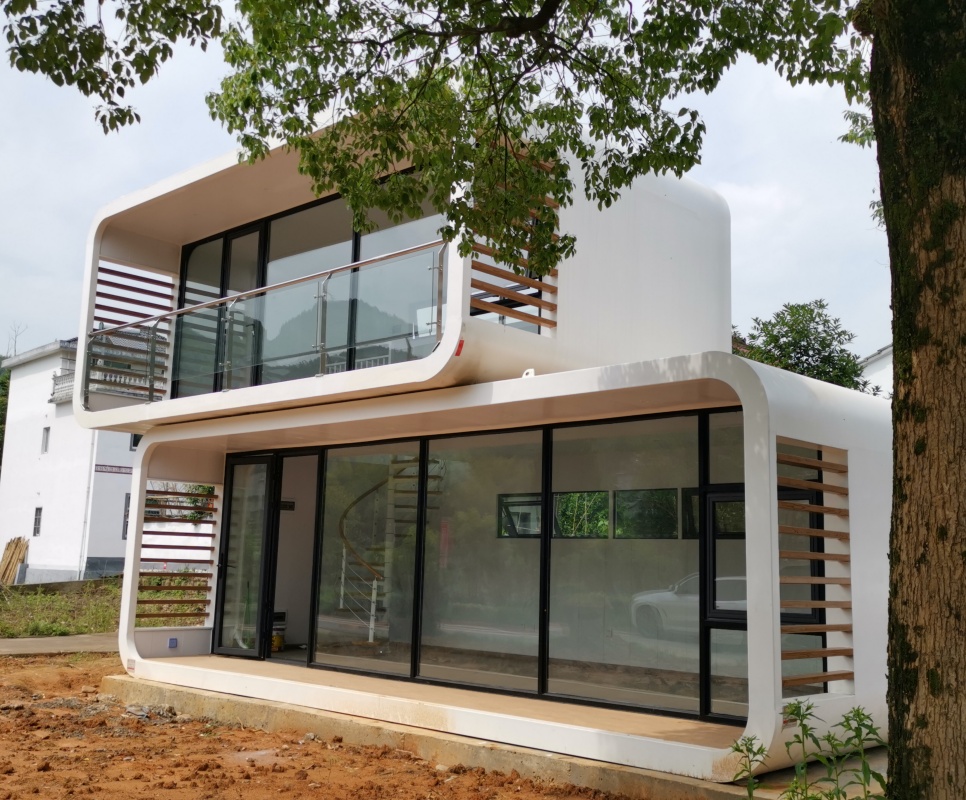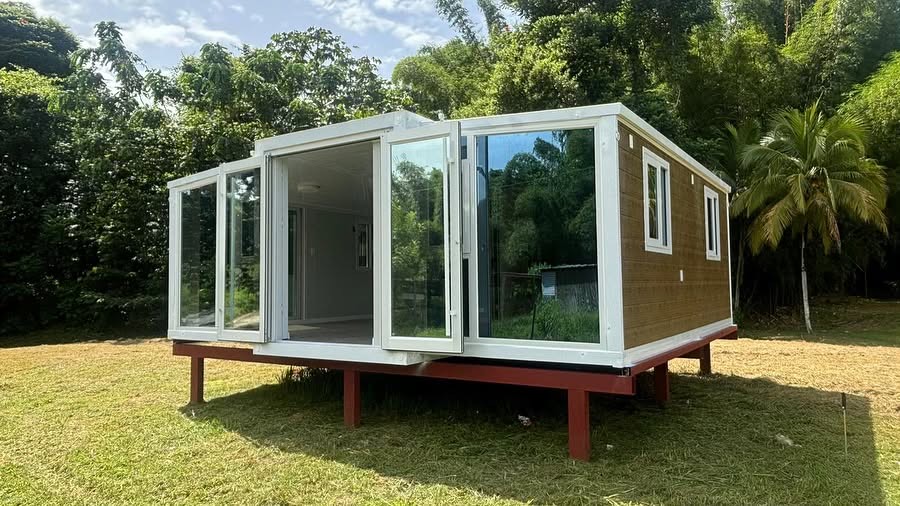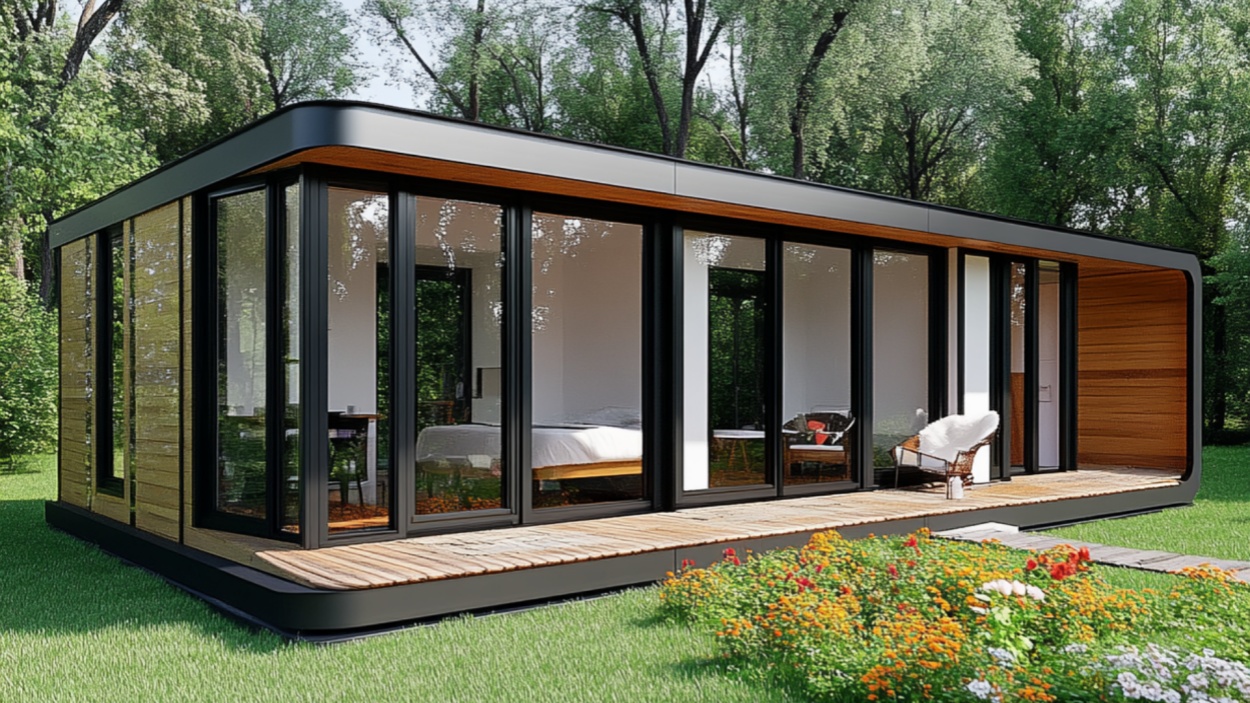Blog
Revolutionizing Affordable Living: Amazon’s Double-Story Expandable Prefab Container Home
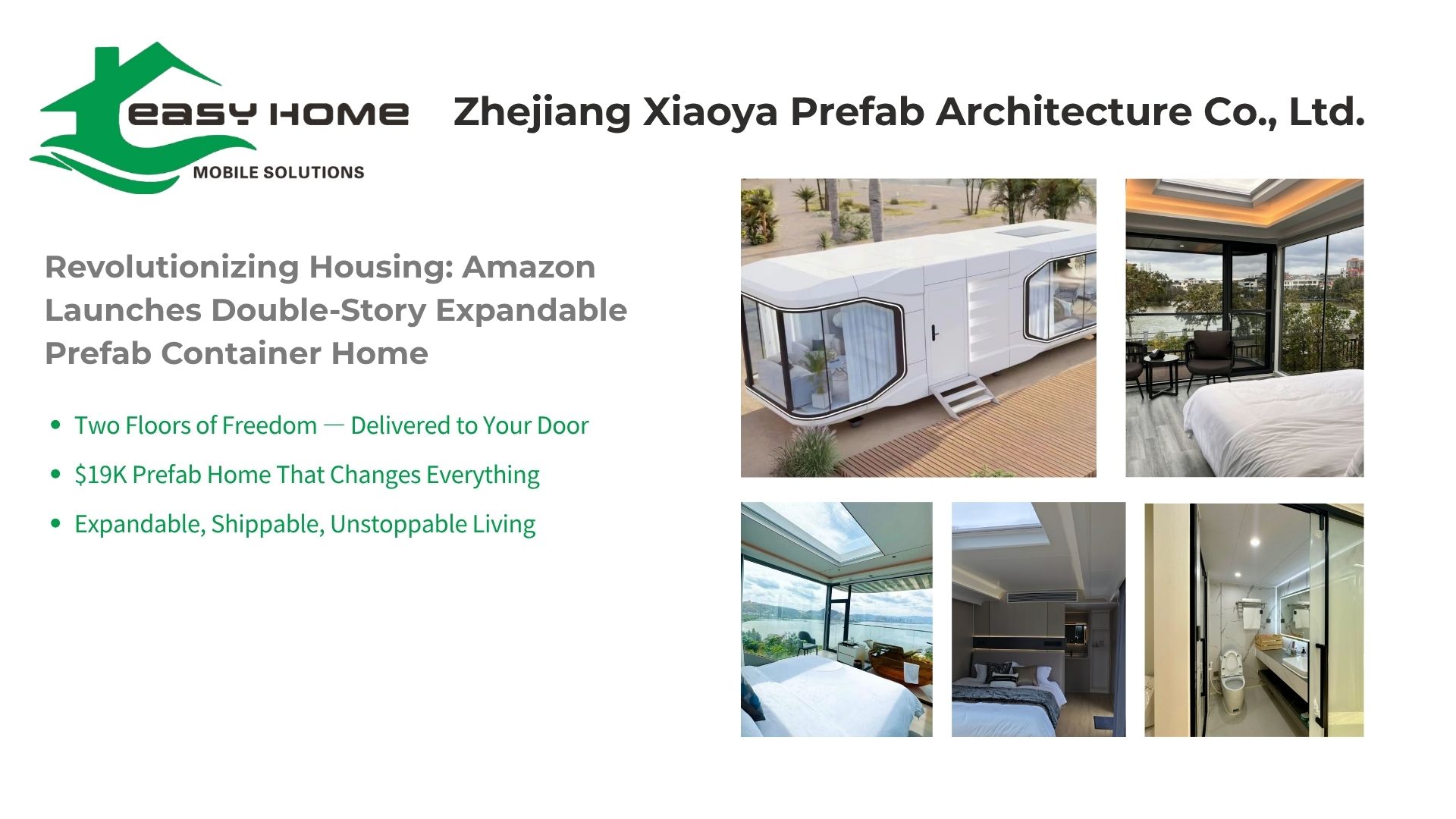
1. Introduction: Amazon Disrupts the Housing Market
Amazon has long been known as the “everything store,” selling everything from books to groceries to furniture. But in a bold new move, the tech giant has officially stepped into the real estate world with the launch of a double-story expandable prefab container home — a modular housing solution priced at around $19,699. This development signals a radical shift in how we view homeownership, housing access, and construction logistics in the modern era.
2. Product Overview: Inside the Double-Story Prefab Container Home
This prefab house is more than just a steel box — it’s a fully functional, multi-level living space designed to rival traditional homes. Built for comfort, utility, and flexibility, it combines smart layout with durable design.
Ground Floor Features:
-
Full-size kitchen area with cabinetry and sink
-
Dining space with shaded outdoor deck
-
Cozy living room, adaptable for office or guest use
Second Floor Features:
-
Private bedroom with full privacy
-
Full bathroom with toilet, sink, and shower
-
Spacious upper deck for sunbathing, lounging, or city views
Utilities come pre-installed: electrical wiring, plumbing, and HVAC routing are ready to be connected. Units support both self-assembly and staged installation, allowing for unmatched user flexibility.
3. Modular Living Redefined: The Expandable Edge
Traditional container homes often face criticism for being cramped or monotonous. Amazon’s version solves this with expandability — walls slide out, decks fold open, and internal partitions flex based on usage.
Benefits of this approach include:
-
Smaller shipping footprint: easier to transport
-
Post-delivery expansion: more usable area once installed
-
No crane needed: modules can be unpacked and assembled with limited equipment
This design provides a full-sized living experience in a tiny home footprint, making it suitable for urban backyards, rural retreats, and resort applications alike.
4. Amazon’s Strategic Leap Into Real Estate
Amazon’s entry into prefab housing reflects a convergence of key trends:
-
Soaring global housing costs
-
Boom in modular construction innovation
-
Consumer comfort with high-value online purchases
-
Increased demand for ADUs and off-grid housing
By selling homes directly through its platform, Amazon:
-
Disrupts traditional real estate agents and developers
-
Empowers global buyers with click-to-order housing
-
Leverages its logistics power to simplify cross-border prefab delivery
This move isn’t just experimental — it may set the tone for how homes are bought and sold in the coming decade.
5. Real-Life Applications: ADUs, Airbnbs, and More
The double-story expandable container home serves multiple use cases:
-
Accessory Dwelling Unit (ADU): For multigenerational families or as a legal rental unit
-
Short-term Rentals: Airbnb, glamping resorts, eco-retreats
-
Primary Residence: For couples, digital nomads, or first-time buyers
-
Off-grid or Rural Living: Pair with solar panels and septic system
-
Mobile Clinics or Classrooms: A turnkey base for NGOs or community services
Its two-deck design also makes it appealing for luxury-in-a-small-space enthusiasts — offering both form and function.
6. The Economics of Affordable Living
For $19,699, this home offers:
-
2 stories of livable space
-
Installed electric & plumbing
-
Weatherproof construction
-
Minimal or no maintenance
-
Fast installation
Compared to traditional home construction, which may start at $150,000+ (depending on region), this prefab solution:
-
Saves over 85% in initial investment
-
Requires no architects or large contractors
-
Allows phased, budget-friendly expansion
In regions facing housing affordability crises — such as California, New York, London, and Vancouver — this prefab unit presents a powerful solution for middle-income earners and property investors alike.
7. Material & Structural Engineering Breakdown
This home is built to last, using industrial-grade materials engineered for extreme climates:
-
Frame: High-strength galvanized steel
-
Walls: Insulated sandwich panels (EPS or PU core)
-
Flooring: Waterproof marine-grade plywood with optional laminate
-
Roofing: Anti-leak coating with snow/wind resistance
-
Windows/Doors: Double-glazed aluminum for insulation and security
All materials are:
-
Corrosion-resistant
-
Fire-rated
-
Low-maintenance
-
Mold-proof & pest-proof
These specs make the unit viable for cold Canadian winters, hot Australian summers, and everything in between.
8. From Click to Keys: The Installation Journey
What happens after you click “buy” on Amazon?
Here’s how the typical process works:
-
Order Confirmation: You receive final specs and customization options
-
Site Prep: Buyer clears and levels installation land; prepares utilities
-
Delivery: Container arrives flat-packed within 30–45 days
-
Unfolding & Assembly:
-
Walls are extended
-
Floors and stairs installed
-
Electrical/water connections hooked up
-
-
Inspection & Move-In: Final checks and certifications if required
The whole process, from click to live-in, can be as short as 30–60 days — a fraction of the time for traditional construction.
9. Comparing Housing Types: Container vs. Traditional
| Feature | Amazon Container Home | Traditional House | Mobile Home |
|---|---|---|---|
| Cost | ~$20,000 | $150,000–$500,000 | ~$80,000 |
| Build Time | < 60 Days | 6–12 Months | 3–4 Months |
| Customization | Medium (modular add-ons) | High | Medium |
| Transportability | High | None | Medium |
| Sustainability | High | Medium | Low |
| Permit Requirements | Variable (ADU/Modular) | Strict | Moderate |
This comparison illustrates why expandable prefab container homes offer a unique niche — flexible, fast, and functional.
10. Buyer Profiles: Who’s Purchasing and Why
Young Professionals:
Looking for affordable starter homes, especially in high-rent cities
Property Investors:
Using container homes as income-generating Airbnb units or long-term rentals
Off-Grid Enthusiasts:
Seeking energy-efficient, customizable housing in nature-rich areas
Aging Parents or Multigenerational Families:
Using prefab units as in-law suites or independent backyard housing
Remote Workers & Creatives:
Designing work-from-home pods, studios, and mobile offices
Each profile shows the growing demand for housing that is flexible, relocatable, and budget-friendly.
11. Global Impact: What It Means for the Industry
This Amazon listing is already making waves globally:
-
Covered by major media: PR Newswire, The Sun, Daily Telegraph, etc.
-
Triggered spikes in Google searches for “Amazon prefab house”
-
Opened international eyes to the viability of prefab container living
-
Increased interest in Chinese prefab manufacturers — especially those offering OEM/ODM container homes
It could also inspire other platforms like Alibaba, Wayfair, and even IKEA to consider prefab partnerships, sparking new global competition.
12. The Future of E-Commerce and Prefab Housing
This moment is more than just a viral headline — it’s a turning point in how we build and buy homes.
Expect to see:
-
Growth in click-to-order housing models
-
Expansion of prefab options on major platforms
-
Greater emphasis on mobility, sustainability, and modularity
-
Policy reforms to fast-track prefab approvals
The housing industry is shifting — not away from construction, but toward consumer-first design and delivery.
13. Conclusion: A New Home Paradigm
With this launch, Amazon has introduced a bold new chapter in housing — where homes are not just bought, but ordered, shipped, and unfolded like furniture. For less than $20,000, buyers can now enjoy two-story living with all the comforts of a traditional home.
Prefab container homes are no longer a fringe idea — they are an emerging standard, blending affordability, flexibility, and modern aesthetics in one compact package.
As housing challenges grow worldwide, solutions like these are not just convenient — they are essential.
Pls check www.easyprefabhouse.com and send inquiry to dzswb@hzxiaoya.com




